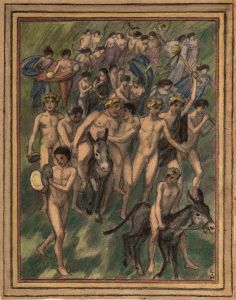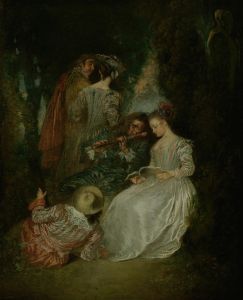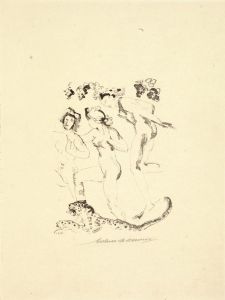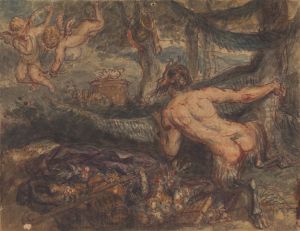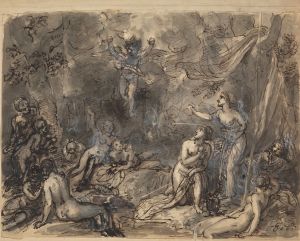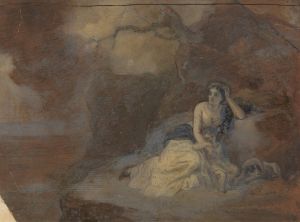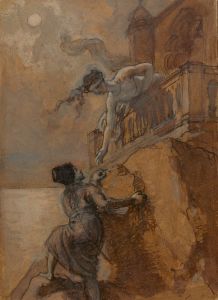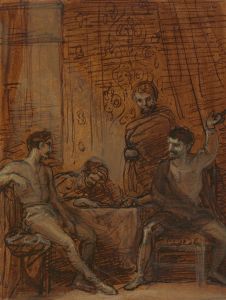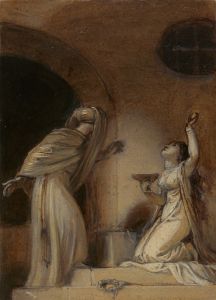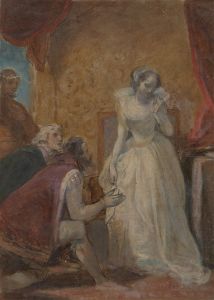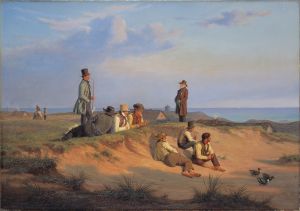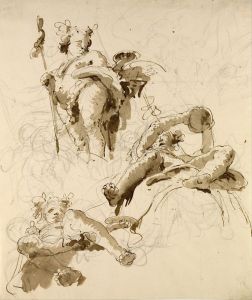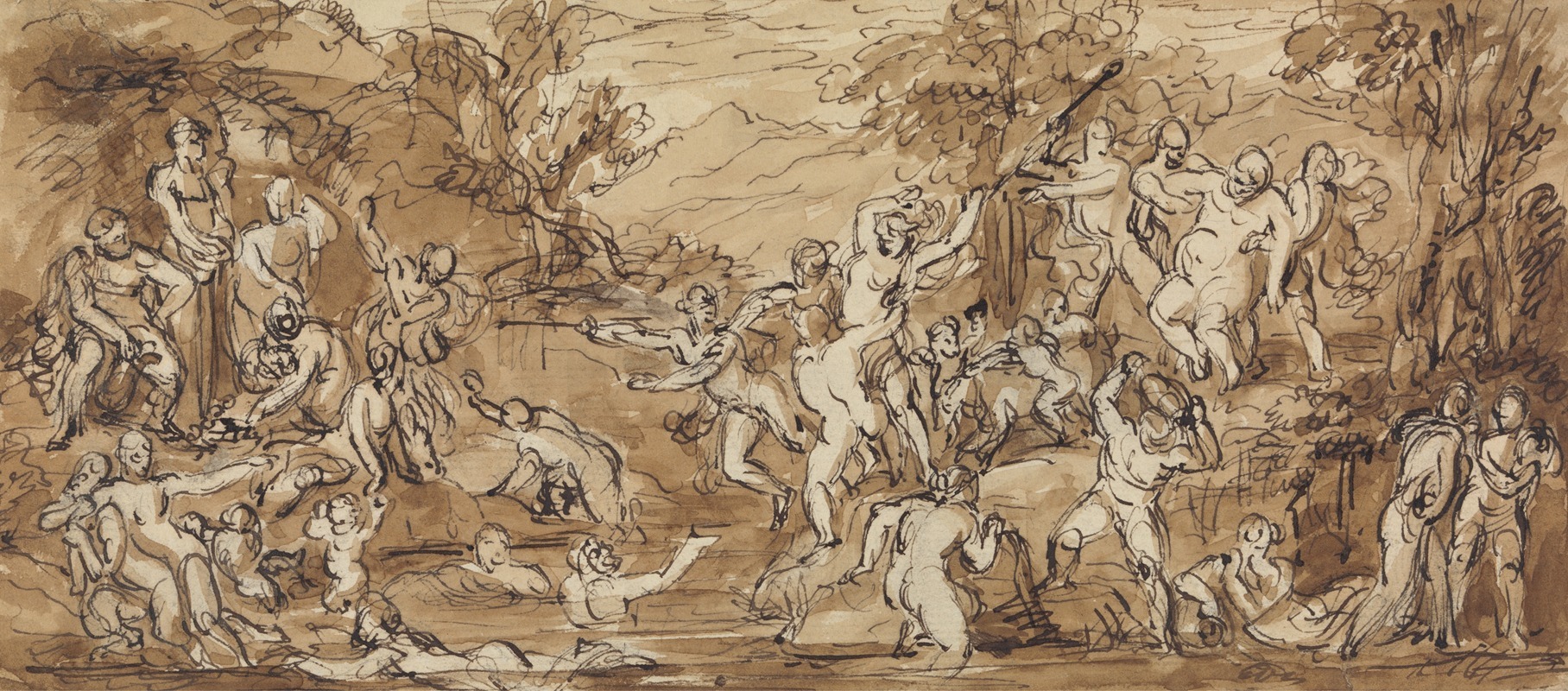
Figure Study of a Bacchanalia Celebration in a Wooded Landscape.
A hand-painted replica of Robert Smirke’s masterpiece Figure Study of a Bacchanalia Celebration in a Wooded Landscape., meticulously crafted by professional artists to capture the true essence of the original. Each piece is created with museum-quality canvas and rare mineral pigments, carefully painted by experienced artists with delicate brushstrokes and rich, layered colors to perfectly recreate the texture of the original artwork. Unlike machine-printed reproductions, this hand-painted version brings the painting to life, infused with the artist’s emotions and skill in every stroke. Whether for personal collection or home decoration, it instantly elevates the artistic atmosphere of any space.
Robert Smirke's "Figure Study of a Bacchanalia Celebration in a Wooded Landscape" is a notable work that reflects the artist's engagement with classical themes and his skill in capturing lively scenes. Robert Smirke (1752–1845) was an English painter and illustrator, recognized for his contributions to the neoclassical movement and his ability to depict historical and literary subjects with a keen sense of detail and narrative.
The painting, as suggested by its title, depicts a Bacchanalia, which refers to the ancient Roman festivals of Bacchus, the god of wine, freedom, intoxication, and ecstasy. These celebrations were known for their uninhibited revelry and were often characterized by music, dance, and the consumption of wine. Smirke's work captures the essence of these festivities, set against the backdrop of a wooded landscape, which adds a sense of natural beauty and seclusion to the scene.
In the composition, Smirke likely employs a variety of figures engaged in different activities associated with the Bacchanalia. The figures might be depicted in dynamic poses, participating in dance, playing musical instruments, or indulging in the pleasures of the feast. The wooded landscape serves as a lush and vibrant setting, enhancing the sense of freedom and abandon that these celebrations were known for. Smirke's attention to detail and his ability to convey movement and emotion would be evident in the way he renders the figures and their interactions.
Robert Smirke was known for his precise and delicate style, which often included a focus on line and form. His works frequently drew inspiration from classical antiquity, and he was adept at integrating these influences into his paintings and illustrations. Smirke's interest in classical themes is reflected in his membership in the Society of Dilettanti, an organization dedicated to the study of ancient Greek and Roman art and culture.
Throughout his career, Smirke produced a wide range of works, including illustrations for literary classics such as "Don Quixote" and "The Arabian Nights." His ability to translate narrative into visual form made him a sought-after illustrator and painter during his lifetime. While "Figure Study of a Bacchanalia Celebration in a Wooded Landscape" may not be as widely known as some of his other works, it nonetheless exemplifies his skill in capturing the spirit of classical themes and his interest in the interplay between human figures and their natural surroundings.
Smirke's contributions to the arts were recognized during his lifetime, and he was elected as a Royal Academician in 1792. His works continue to be appreciated for their historical and artistic value, offering insights into the neoclassical movement and the ways in which artists of the period engaged with themes from antiquity.
In summary, Robert Smirke's "Figure Study of a Bacchanalia Celebration in a Wooded Landscape" is a testament to his ability to depict classical themes with precision and vitality. The painting captures the essence of Bacchanalian revelry, set within a richly detailed natural landscape, showcasing Smirke's talent for narrative and his appreciation for the classical world.






